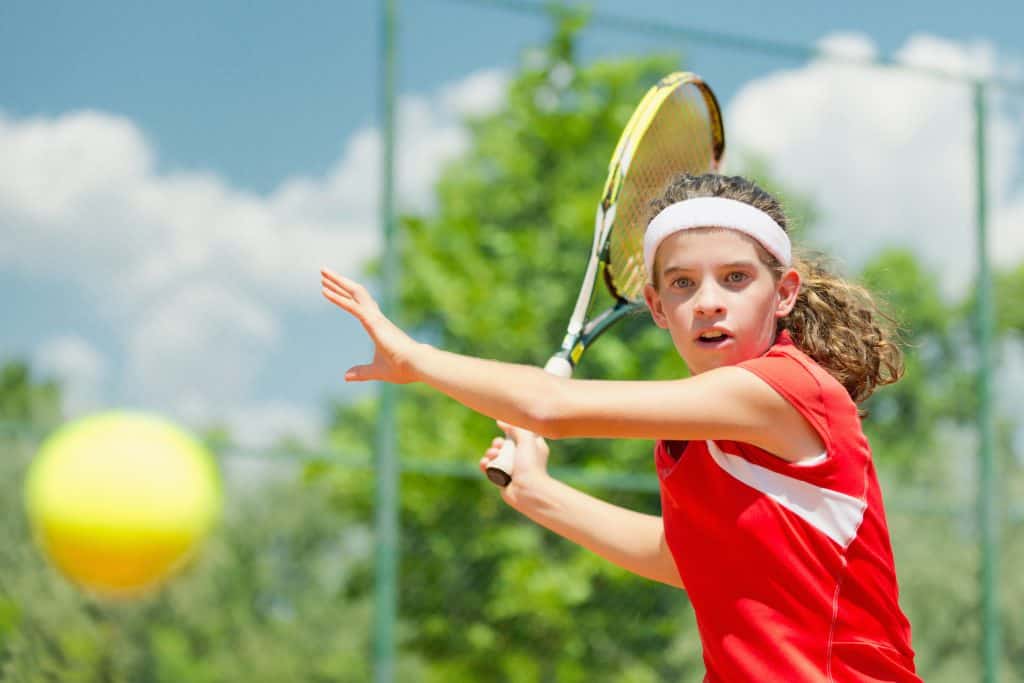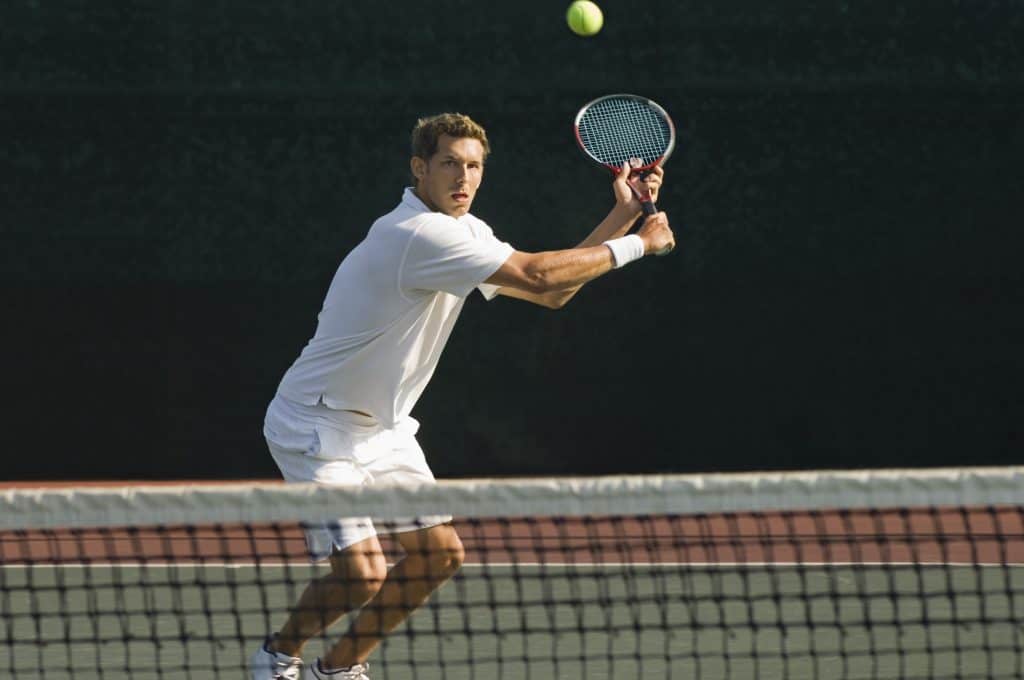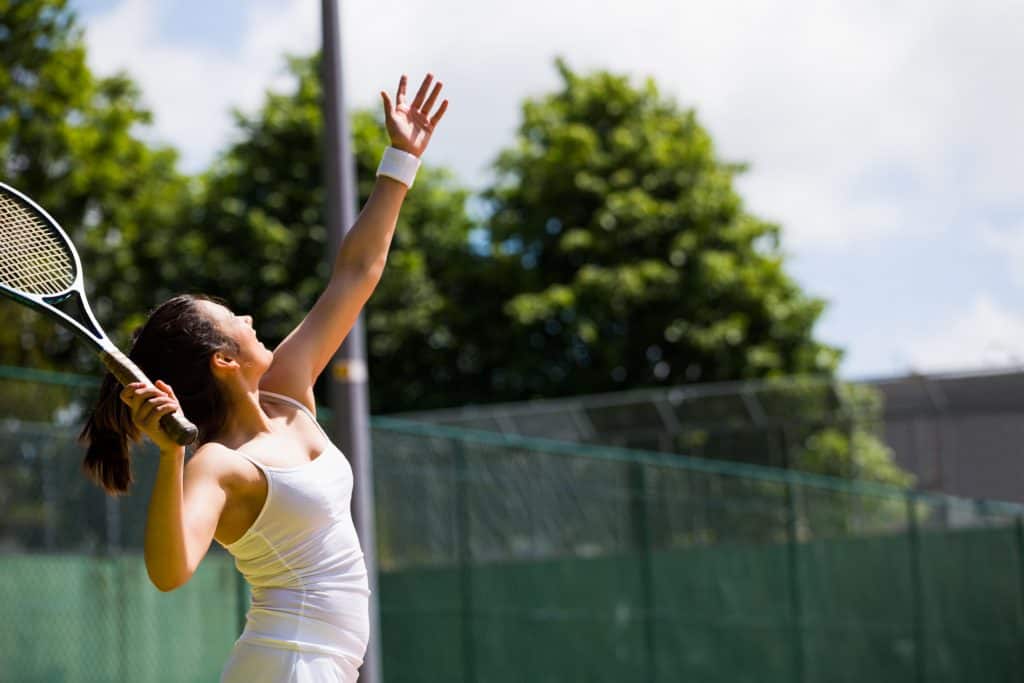Starting to play tennis can be a lot of fun for anyone just starting out. But it can become quickly frustrating if you feel that you are not progressing or getting the hang of it right away. That’s why it’s essential to do the right drills for your level.
Beginners’ drills are even done by the top-level pros in the world because the basics are something that continually needs to be reviewed. A beginner should always go over exercises that isolate the groundstrokes first and then try a few drills that mix the shots.
Once you mix the shots together, how well you do it is less of the point. For beginners, it’s the repetition that matters.
Here are the top five drills a beginner can do to improve.
Table of Contents
1. Isolations:
The first thing that every beginner should do at the beginning of practice is to isolate the different strokes.
These strokes are:
- Forehand
- Backhand
- Slice
- Volleys
- Serve
How: To isolate the different strokes, you will want to spend time doing a combo exercise. The great news is you can do this by yourself or with a coach.
The combo works like this. First, you will want to start with practice swings without the ball. These are also called shadow swings. Do this slowly a few times, focusing on the swing pattern for the particular stroke you are working on.
Once you have done this well a few times, reviewing your checklist for the swing, you can add the ball in. You can feed it to yourself or have a coach feed it to you, trying to emulate that exact swing you did without the ball.
Do this for all the groundstrokes.
2. Change Of Direction:
The next best drill a beginner can work on is a hand-fed change of directions with groundstrokes.
This is primarily a drill for forehand and backhand groundstrokes.
To keep things consistent while learning the different tennis strokes, this drill should be hand-fed instead of a live ball to start. This will allow the player to develop a feel and make minor adjustments without worrying about too much footwork.
How: Feed the ball to the same spot multiple times while the beginner works on hitting one cross and one down-the-line. This will slowly introduce the subtle changes that the racquet face needs to make while learning how to aim.
It also introduces a small amount of footwork as the first step will be different for cross verse down-the-line.
Once this is done for one side, such as the forehand, spend time doing it on the backhand.
3. Around The Cone:
Now is the time to forget about the technical aspect that the beginner has been working on and introduce footwork.
This can be done first in isolation with practice swings and then done with a hand-fed ball.
The reason why the technical work doesn’t matter here as much is that the whole focus is learning how to move fluidly. Eventually, the technical work and footwork will come together.
- AGILITY TRAINING: Includes 20 high visibility orange training cones - essential for any training regimen to support player development in a variety of sports
How: Place a cone in the center mark a few steps behind the baseline. This is the target that the beginner needs to recover around each time before hitting a ball.
The player should always move in front of the cone with small steps after hitting the ball rather than behind the cone before hitting the ball. This instills proper movement patterns. In other words, they should be moving in a clockwise pattern.
Focus on either just the forehand or backhand at one time. After they do one side well, you can have to alternate sides one and one.
Make sure to only feed about 5 balls in a set and take a break in between sets. Footwork breaks down when players become tired.
4. Live Ball Rally:
After the technical and footwork isolation, it’s time to incorporate a live ball rally. The goal here should be to get the ball to continuously cross the net with little worry about footwork and technique.
Of course, applying what you’ve learned before is important, but it is not the primary goal as these will naturally improve.
How: There are different variations that you can do.
- Basic Center-to-Center
Start with a simple down the middle back-and-forth. This will allow the player to be free and move and hit without any limitations. This is the best thing a beginner can do to learn and adapt to the variations of tennis. This is the most simple and most effective drill. - Deuce and Ad Corners
Have the pro or the opposite player who is not the beginner stay in one corner of the court. Rally with the beginner, slightly moving them around while the beginner aims to one side of the court. This is a more advanced version of the hand-fed change of direction drill.
5. Serve Plus One:
After the isolation of serve, it’s important to learn the plus one that comes after the serve. This is the next ball you get after the returner hits your serve. You can do this drill either live or by hand-fed.
How: It’s always a good idea to start with the hand-fed ball version then live.
- Hand-fed
Hit your serve like you normally would and have a coach hand feed you the next ball to either your forehand or backhand. This will be a slower pace that will allow you to focus on recovering out of the serve and trying to maintain form and footwork. - Live Ball
This is exactly as it sounds. Have another player return your serve and work on a live reaction to their return by hitting the next ball back. Stop after this ball, as the focus is the first two shots for the server.
Conclusion
These are the best drills and combinations that a beginner can do. They should always be done in forms of isolation before mixing in multiple aspects. This will give the players confidence rather than overloading them.



